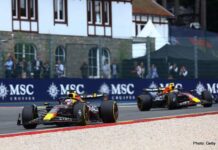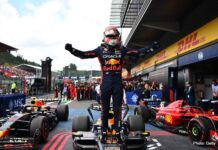Here we are, the end of 2022 Formula 1 season, a new technical definition in the life cycle of our beloved sport, and one that we were left anticipating earnestly due to its introduction delay because of COVID.
The ground effect era changed the balance of competitive hierarchy in Formula 1, the cars had different behavioural characteristics which demanded adaptation from the drivers, and whilst some coped with the required change to their driving technique, some struggled.
The 2022 changes of Formula 1
Whilst from a literal perspective the changes to what an F1 car technically was were many, more broadly they were the introduction of a ground effect underfloor coupled with a more restrictive upper aerodynamic surface framework, a shift from 14” wheels to 18”, and the use of a higher sustainable component ratio for the internal combustion engine fuel.
Technical changes aside, this year saw a further fundamental shift in the economic model under which all teams operated, as a financial cost cap, introduced in 2021, was reduced limiting each team to an operational budget of $140-Million, along with time limitations that capped the use of aerodynamic research resources such as wind tunnels and CFD (Computational Fluid Dynamics).
What these changes meant

The fundamental intent of this new epoch was two-fold. Firstly, by reducing the aerodynamic reliance on turbulence producing and sensitive upper aero surfaces, such as front and rear wing sections, and increasing the reliance on less turbulence producing and sensitive ground effect under-floors, the 2022 F1 car produced a much more laminar rearwards flowing aerodynamic wake and is more capable at following another car in proximity at speed.
Secondly, limiting the financial and aerodynamic resources available to each team will theoretically converge the competitive spread of the field. The caveat to this is that the impact will not be immediate, but as time passes and all teams adapt to researching and developing within the new limitations a sort of status quo will be reached.
The “porpoising” bounce
Of course, there were teething problems, as there always are when major change is forced upon organizations, and the behaviour of “porpoising” became a contemporary topic from the very first day of preseason testing all the way back in February at Barcelona.
It almost seemed ironic, though, that after all the posturing and deliberating about how dangerous the under-floor stall induced bounce was, the introduction of Technical Directive 039 that was intended to mitigate and police the issue, was essentially a moot point because by the time it had been implemented into action the teams had found ways of minimizing the phenomenon, or at least found a way of living with it.
New sized tyres for 2022

As always, tyres in 2022 were a war breaker, and it was the teams who learnt how to activate the lower profile sidewall offerings and sustain a manageable operating window who were the most successful.
With far less sidewall compliance the new for 2022 tyres offered a much small tuning window and left the teams with a far more finely balanced characteristic, with a more snappy inherence.
Nevertheless, with the new sized tyres being introduced while ground effects were as well, which required more stiffly sprung suspension, and a lack of cooperation more broadly from the teams through 2020 and 2021, the side wall stiffness of the new front tyres was left wanting somewhat, which was responsible for the understeer balance throughout the 2022 field.
For 2023, a front tyre with a stiffer side wall will be supplied which will migrate some of the mechanical grip balance forwards and theoretically reduce the understeer behavioural tendencies observed this year.
Further, it became evident early in the 2022 season that the gap between the C1 and C2 compounds was too broad, and so for next year a softer C1 compound has been developed, which will narrow up the performance gap between the C1 and the C2 and create more flexible race strategies for Grands Prix run at the harder end of the compound scale.
The need for change in the way the sporting element was managed

The management of the sporting aspects of F1 in 2021 left the FIA open to much criticism, particularly after the Abu Dhabi debacle, and so for 2022 the season was to have a rotation of two Race Directors from event to event, with Niels Wittich and Eduardo Freitas selected for the job.
However, it became evident during the season that the rotation of the role was responsible for a lack in continuity in the sporting decisions, such as track limits.
However, the need to change back to a single Race Director was forced upon the FIA after the extremely dangerous and embarrassing incident at the 2022 Japanese Grand Prix when the use of recovery vehicle on the circuit whilst race cars were circulating, albeit under mitigated conditions, occurred in torrential conditions.
Looking forward to Formula 1 in 2023
For 2023, the technical changes will be minimal, with the primary change being an increase in static ride height by 15mm, being brought in to help mitigate “porpoising” further.
Whilst this will certainly reduce ultimate downforce loadings, the broader impact to lap speed and close proximity racing will be minimal, if anything at all.
As we look forward to another exciting season of F1 racing ahead of us in 2023 I would like to extend my best Christmas wishes to all the readers and their families and friends, and for a happy and prosperous New Year.














































